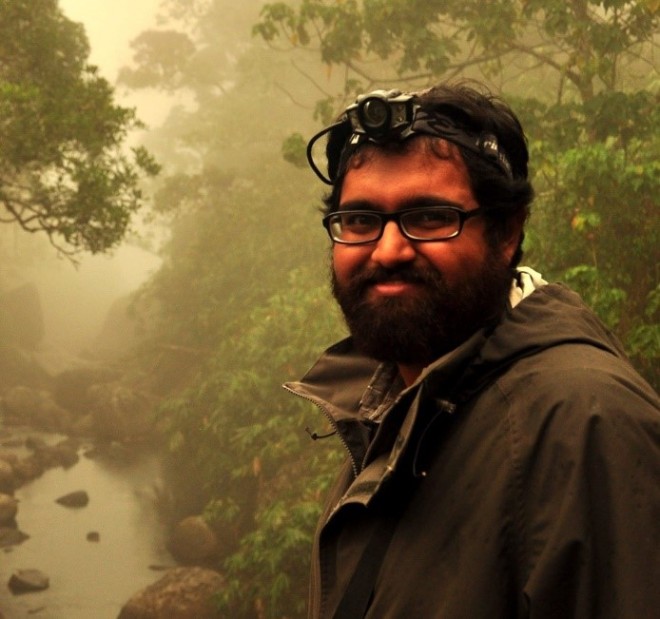PhD Defense Seminar cum Oral Examination
Department of Biological Sciences, NUS
“Discovery, parental care and conservation of frogs in the Western Ghats of India”
Speaker: Seshadri Kadaba Shamanna (Graduate Student, Dept. of Biological Sciences, NUS)
Date: 25 Jan 2018, Thursday
Time: 10am
Venue: DBS Conference room (S3 Level 5, #05-02)
Supervisor: Asst. Prof. Frank E. Rheindt
Abstract – Amphibians are a diverse group of vertebrates that are relatively understudied with nearly 30% of them being discovered only in the last decade. Globally, a third of all amphibians are already threatened with extinction and the need to rigorously document their natural history and ecology is imperative. Thus, my thesis is focused on bridging our knowledge gaps about frogs. It was undertaken in the Western Ghats of India, a renowned biodiversity hotspot where amphibians are underrepresented in research.
Specifically, I report the discovery of two hitherto undescribed species belonging to two families and reappraise the descriptions of three other extant frogs. I then document a novel behaviour in two species wherein the adult frogs of Raorchestes ochlandrae and Raorchestes aff. chalazodes (Rhachophoridae) enter bamboo stalks via narrow openings and lay direct developing eggs and provide parental care to developing embryos inside the bamboo internodes. This behaviour is unique among all extant anurans and is described as a novel reproductive mode.
Subsequently, I focused on the behaviour of R. aff. chalazodes and to do so, required an effective tool for which, I undertook a mini-review of methods used to study animals dwelling in cavities. This enabled me to choose endoscopes to study the behaviour of R. aff chalazodes.
I then established the evolutionary significance of parental care behaviour in R. aff chalazodes using insitu adult removal experiments and found that conspecific males cannibalized unattended eggs. Unattended eggs were also eaten by ants, parasitized by flies, and died from fungal infections or drowned. Thus, male parental care behaviour in form of egg attendance, egg guarding and, oviposition site defence increases offspring survivorship.
With an ultimate goal of conserving R. aff chalazodes, I predicted the potential geographic distribution using species distribution modelling. Finally, my contributions are summarized in the context of existing knowledge about diversity and reproductive ecology of amphibians to identify avenues for further research.
All are welcome


